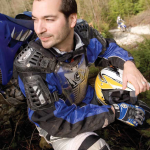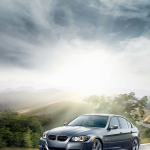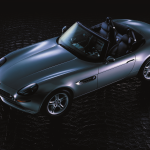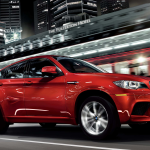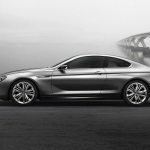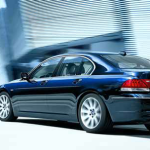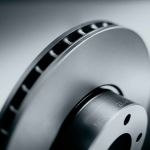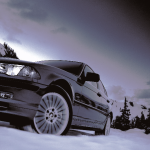
Sponsored Ads

When thinking of BMW, all-wheel drive comes to mind, doesn’t it? Well, maybe not right away, but the iconic Teutonic carmaker has actually been producing 4x4s since 1937. Throughout the years that followed, various AWD BMWs surfaced. The most renowned, prior to more recent applications, was the E30-bodied 325ix from the late ’80s. The little sedan developed a zealous following here in the Terminal City and throughout the world, due to its nimble handling and superior traction, a popularity BMW effectively evolved into strong sales for its current 325xi sedan, 325xi Touring (wagon) and its more powerful and more lavishly appointed 330xi sedan. Overall, the 3-Series is well accepted by Vancouverites as the sport sedan of sport sedans, the undisputed leader in its market segment and a favourite among driving professionals. To those out of the loop, however, it may come as a surprise that all-wheel drive is even being offered on a car that has long been rear-driven, and possibly more of a surprise that Brian Jessel BMW currently sells 11 unique all-wheel drive models in Canada.

Probably the best known all-wheel drive BMW is the extremely popularX5, but it was the more recent X3 that ushered in the brand’s innovative and exclusive xDrive AWD technology. What makes it unique? Where most AWD systems apportion drive power to a set front-to-rear ratio, like the 38 percent front and 62 percent rear bias of BMW’s previous 330xi, or at the very least allow for limited variances from front to rear depending on traction or the lack thereof,
BMW’s “intelligent” all-wheel drive system infinitely varies torque distribution from front to rear via an electronically controlled multiple-plate clutch, splitting drive forces 50:50 when necessary, or optionally from 0:100 front to rear; although when driving in straight, flat conditions over dry, paved road surfaces (if you can find many roads like that in and around this city) 60 percent of the engine’s power is transferred to the rear axle while 40 percent shifts to the front what BMW’s engineers consider the ideal state of readiness.
Therefore, xDrive instantly responds to road surface irregularities to optimize performance, benefiting both safety and enthusiast concerns. It’s almost as if the sophisticated drive system has the ability to think ahead, and in effect xDrive does anticipate upcoming road surface inconsistencies by immediately deciphering wheel sensor derived road speed information, steering trajectory input levels, lateral acceleration info and engine data, so that BMW’s DSC stability control system’s “brain” is already crunching numbers before any tire slippage has even occurred.
When a wheel starts to spin, DSC immediately makes the necessary adjustments by applying ABS-enhanced braking force to the offending wheel while adding power to the opposite wheel still gripping the road, resulting in total control at the point where an accident could have otherwise occurred. While all of these intervening electronics sound wonderfully comforting to those who prize safety over stretching the performance envelope, Sea-to-Sky enthusiasts need not concern themselves that
Sponsored Ads

BMW has taken a hands-off approach to their favourite do-it-yourself ride. The same as with rear-drive BMWs, DSC Dynamic Stability Control can be completely deactivated, allowing sports-minded drivers to power-slide with the best of them. xDrive, however, cannot be deactivated a good thing. With feats of oversteer-finery in mind, BMW attests that xDrive, in its fully-functional mode, minimizes under and oversteer, and therefore delivers relatively neutral dynamic properties when attempting to carve the perfect apex, and I have to agree.
My first experience with xDrive was during the X3 launch in southern Spain, where twisting, undulating roads follow a rugged coastline and became even more enjoyable when venturing up into the local mountains. It only took one day’s drive to realize that a new SUV handling benchmark had been set, and now that BMW has applied xDrive to every one of its previous all-wheel drive models, including the aforementioned X5 and 3-Series, plus fitted it to the new 530xi and 530xi Touring, which were added last year, the automaker has an all-wheel drive lineup to rival any competitor.
But what about fuel economy now that pump prices are approaching a dollar a litre again? It’s true that most all-wheel drive systems negatively affect consumption, due to driveline drag and added weight, but the safety and performance benefits weigh in BMW’s favour when comparing xDrive to alternative all-wheel drive systems. When fitted to the 330xi, xDrive only adds 95 kilos (210 lbs) to the total curb weight which results in an additional 0.1 seconds to its 100 km/h sprint, a negligible amount, plus an additional 0.62 L/100 km of fuel in the city and 0.56 L/100 km on the highway.
It seems that all the challenging engineering work that went into developing xDrive has paid off, now that close to half of all BMW vehicles sold in Canada are equipped with the formidable all-wheel drive system.



























































































